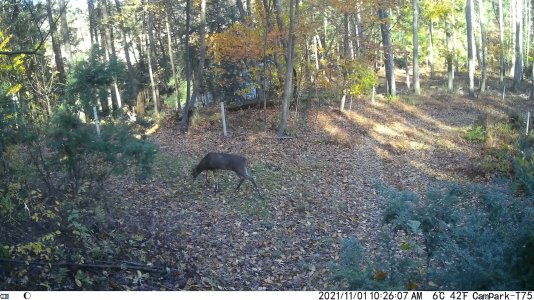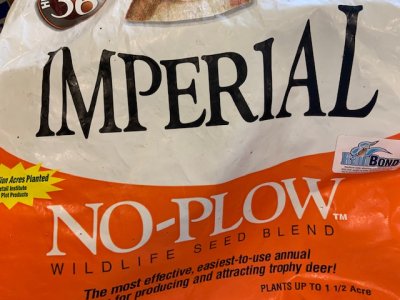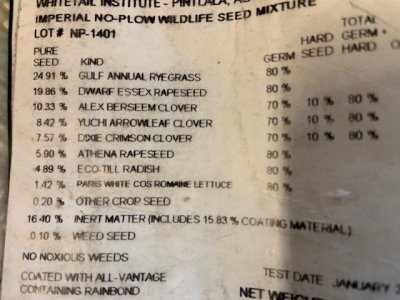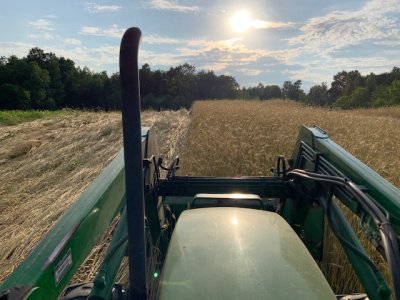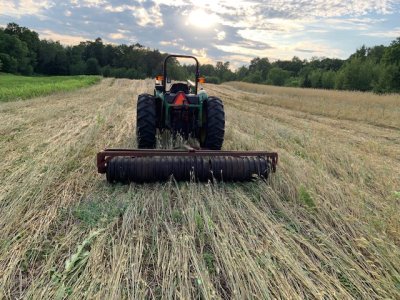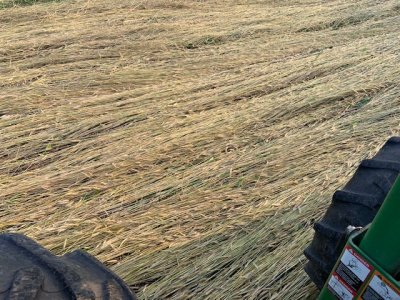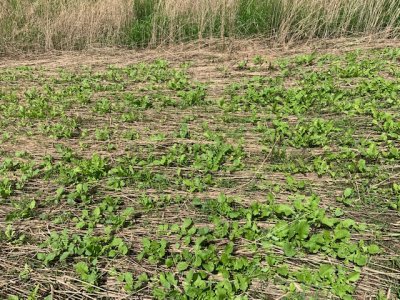As a matter of fact....I just happened to take a pic of the Whitetail Institute No-Plow seed tag last week. Mind you - this is some very old seed that was given to me by a buddy who no longer owns his hunting property. The newer version of this seed may very well be different.
View attachment 45186
It contains 25% Gulf Annual Ryegrass... I doubt that this old seed would have given a very high percentage of germination...but, I am not interested in growing any ryegrass in my food plots anyway so this old seed went out with the trash - please don't tell my buddy.
View attachment 45187
Regarding thatch - Thatch is your friend. My goal is to grow lots of future thatch in my cover crops so I can plant into it. Thatch prevents erosion, suppresses weeds, retains soil moisture, reduces heat from direct sunlight, and feeds nutrients back into your soil as it decomposes - reducing or eliminating the need for synthetic fertilizers. What is not to love about thatch??
This thatch is just about perfect:
View attachment 45188
View attachment 45189
View attachment 45190
And new plants have no trouble at all growing right up through it....
View attachment 45191


